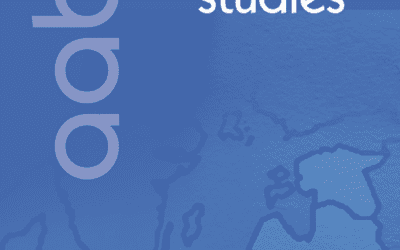The fourth 2020 issue of Journal of Baltic Studies (Vol 51, Issue 4) is now available online. The issue contains articles on the political space and party competition in post-communist Lithuania; the engagement of the diaspora in Latvia’s economic development; perception of the Baltic Sea and Mediterranean regions among secondary school students; narratives about World War II at the schools with Russian as the language of instruction in Lithuania; the vaults of the Faceted Palace in Novgorod the Great and Brick Gothic architecture; attempts by non-Germans to obtain burgher rights in Riga in the 18th and early 19th centuries; the population size of Lithuania between 1897 and 1914; and the political debate about the land question in the Estonian area of the Baltic provinces from 1905–1914.
The issue also includes four book reviews and a list of recently published Baltic titles.
Articles
Mapping the political space in Lithuania: the discrepancy between party elites and party supporters
Ainė Ramonaitė
Party politics in Europe is mainly structured along two dominant dimensions: economic left–right and cultural liberalism–conservatism. This article explores whether these dimensions explain party competition in post-communist Lithuania. The study begins with an analysis of the policy space in Lithuania using party elite data and continues by exploring the attitudes of party supporters. The study demonstrates that an apparent ideological structuring of political parties vanishes when ‘the-party-in-the-electorate’, i.e. the policy orientations of party supporters, are analyzed. A key finding is that the historical post-Soviet–anti-Soviet divide remains the only political cleavage linking the attitudes of parties and their supporters.
Engaging the diaspora for economic gain: what can Latvia expect?
Ieva Birka
Following the global trend of countries engaging with their diaspora populations, Latvia has expressed its commitment to its diaspora with the recent passing of the Diaspora Law. One of the stated aims of the legislation is the engagement of the diaspora in Latvia’s economic development. In this article, a thorough analysis of the existing literature highlights the available diaspora resources that countries of origin can draw upon, identifies the avenues of diaspora engagement for development, and outlines the necessary preconditions for successful diaspora engagement. Using secondary data analysis of available Latvian diaspora surveys, the article then establishes what Latvia can expect from its diasporas, both ‘old’ and ‘new,’ and identifies the most promising target groups for promoting economic development, pinpoints their geographical locations, and outlines the concerns and challenges that Latvia has to overcome in order to effectively engage with and harness the economic potential ofx its diaspora.
Perception of the Baltic Sea and Mediterranean regions among secondary school students
Janne Holmén
Surveys were conducted in ten schools: five in locations around the Baltic Sea and five around the Mediterranean. Students were asked to delimit the two regions on a map of Europe, the Middle East, and North Africa, to assess how much they would like to live in each region, and to write down the advantages and disadvantages associated with living in each region. Students tended to describe the two regions in terms of a North–South dichotomy, describing the Baltic Sea region as cerebral, advanced, and wealthy, while culture, food, and climate were described as advantages of the Mediterranean region.
Memory, identity, and schooling: diverging and overlapping narratives about World War II and its outcomes at the schools with Russian as the language of instruction in Lithuania
Kristina Šliavaitė
This article discusses how different narratives and interpretations of the Second World War and its outcomes for the Baltic states are negotiated and managed at schools with Russian as the language of instruction in Lithuania. In particular, the article focuses on the ways public (official) and private (family) stories of history interrelate in the school sector and on the roles self-attributed by teachers in managing this public-private divide in teaching history. The empirical data are derived from qualitative fieldwork in schools with Russian as the language of instruction in multi-ethnic urban centers of Lithuania.
The cross-cultural interaction in the Baltic region in the fifteenth century: the vaults of the Faceted Palace in Novgorod the Great and Brick Gothic architecture
Dmitriy Yakovlev, Alexandra Trushnikova & Ilya Antipov
Novgorod as a Hanseatic town took part in cross-cultural interaction in the Baltic region. The so-called Faceted Palace is a unique example of cooperation between German and local builders. The vaults generally receive little attention in the historiography on Brick Gothic architecture in the Baltics. This article introduces new data about the construction technique obtained during recent restoration of the Faceted Palace and proposes reconstruction of the vaults. Comparison with analogues in the Baltic region highlights the local interpretation of the complicated rib vaults and provides information on the origins of the builders.
Attempts by non-Germans to obtain burgher rights in Riga in the eighteenth and early nineteenth centuries
Anita Čerpinska
The article deals with two unsuccessful attempts by non-German craftsmen to gain burgher rights in Riga, which would have entitled them to trade freely and keep taverns. In the early modern period, burghers and non-Germans belonged to two linguistically and legally distinct groups. People who applied for burgher rights represented the wealthy segment of the non-German group. Riga Town Council and the influential German merchants were opposed to the idea of non-Germans joining the ranks of the burghers. Their arguments for preventing it included damage to the burghers’ reputation, the origins of non-Germans, and their lack of trading skills. The situation was also influenced by issues relating to the consolidation of Baltic German society and attempts by the Russian government to improve the integration of the Baltic provinces.
The population size of Lithuania (within contemporary borders) between 1897 and 1914
Zenonas Norkus, Aelita Ambrulevičiūtė & Jurgita Markevičiūtė
Historians and historical demographers strongly disagree about the size of the population of Lithuania within contemporary borders in 1914. According to Soviet era sources, it was 2,828,000, while contemporary publications provide a figure of 3,350,500. The main difficulty is incongruity between the limits of administrative units of the Russian empire and the eastern border of independent Lithuania and its many changes between 1918 and 1940. For the first time, we provide an annual time series of the population of Lithuania from 1897 to 1914. According to our estimate, the population increased from 2,668,914 on 28 January 1897 to 3,057,126 by 1 January 1914.
The political debate about the land question in the Estonian area of the Baltic provinces, 1905–1914
Margo Roasto
The Revolution of 1905 launched a political debate about the land question in the Baltic provinces. At the end of 1905, the first legal political parties were formed in the Estonian area. This article examines the views of different Estonian and Baltic German political parties and ideological factions on the land question from 1905 to 1914. The article argues that the debate about the land question was part of a wider discussion about the efficiency of large-scale and small-scale agriculture. The article concludes that the arguments represented in the debate were influenced by several property theories from the late nineteenth and early twentieth centuries.
Book reviews and recent publications
Between Rome and Byzantium: the golden age of the grand Duchy of Lithuania’s political culture. the second half of the fifteenth century to the first half of the seventeenth century, by Jūratė Kiaupienė, Brookline, Academic Studies Press, 2020, 278 pp., $119.00 (hardback), ISBN: 978-1-64469-146-5
Zenonas Norkus
Housing estates in the Baltic countries: the legacy of central planning in Estonia, Latvia, and Lithuania, by Daniel Baldwin Hess And Tiit Tammaru, Cham, Springer, 2019. 383 pp., €53.49 (ebook Open Access), ISBN: 978-3-030-23391-4 (hbk), ISBN: 978-3-030-23394-5 (pbk), ISBN: 978-3-030-23392-1 (ebook)
Andrea Jany
Explorations in Baltic medical history, 1850–2015, edited by Nils Hansson and Jonatan Wistrand, Rochester, University of Rochester Press, 2019, 270 pp., $85.00 (hardback), ISBN: 978-1-58046-940-1
Rima Praspaliauskienė
Language policy and the internationalization of universities: a focus on Estonian higher education, by Josep Soler, Berlin, De Gruyter Mouton, 2019, 175 pp., $115.00/€99.95, ISBN: 978-1-5015-1501-9, ISBN: 978-1-5015-0589-8 (PDF), ISBN: 978-1-5015-0585-0 (EPUB)
Kadri Koreinik
List of books received and recent publications
About the journal
Journal of Baltic Studies (JBS), the official journal of AABS, is a vital source of scholarship for those engaged in Baltic state and Baltic Sea region studies. JBS is a peer-reviewed, multidisciplinary journal published on a quarterly basis that aims at progressing and disseminating knowledge about the political, social, economic, and cultural life – both past and present – of the Baltic states and the Baltic Sea region. JBS seeks high-quality original articles and review of broad scholarly interest that advance knowledge of the Baltic states and Baltic Sea region.
Published quarterly by the AABS, the annual fee for both membership in the Association and a subscription to JBS is $70.00, $35.00 for full-time students, and $35.00 for emeritus members. Members of the Association receive a free personal subscription to the Journal.
JBS welcomes article and book review submissions from AABS members and other scholars. See the Instructions for Authors page for more info.
Other Journal of Baltic Studies News
Journal of Baltic Studies 54/1 Now Available Online
The first 2023 issue of Journal of Baltic Studies (Vol 54, Issue 1) is now available online. This special issue is entitled "Memory and recognition of the Nazi genocide of Roma in the Baltic context." An editorial introduction by Volha Bartash and Neringa Latvytė lays...
Journal of Baltic Studies 53/4 Now Available Online
The fourth 2022 issue of Journal of Baltic Studies (Vol 53, Issue 4) is now available online. The issue contains two standalone articles, on the Baltic Russian-speaking communities' responses to crisis and on the historical photography of disability in Latvia, and a...
Journal of Baltic Studies 53/3 Now Available Online
The third 2022 issue of Journal of Baltic Studies (Vol 53, Issue 3) is now available online. The issue contains articles such as a study of topmost superlexical prefixes of the Baltic verb, border and air space violations in the Baltic Sea region, and teachers’...

